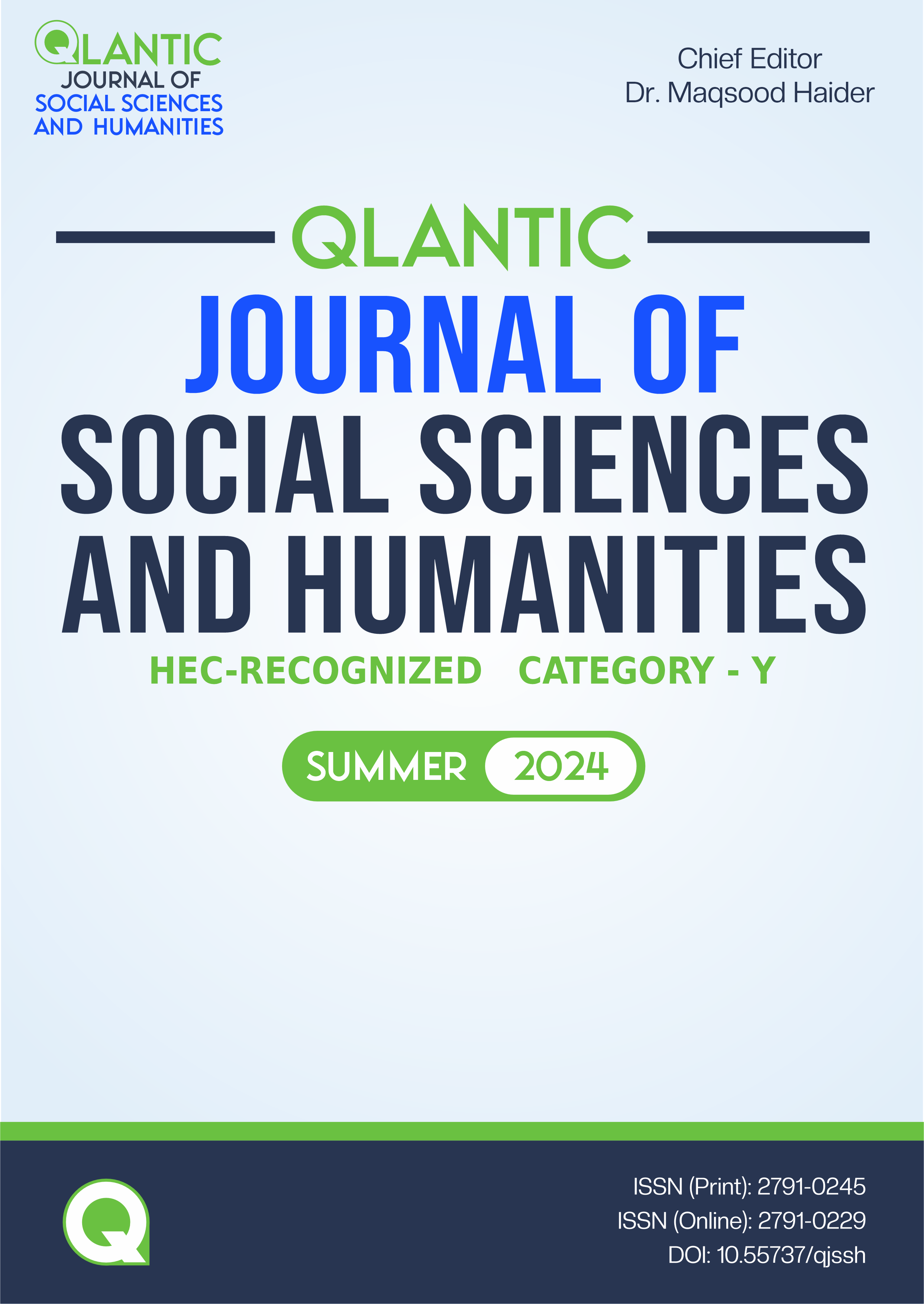Peace and Conflict in Two Friends: A Naturalistic Short Story
DOI:
https://doi.org/10.55737/qjssh.151973503Keywords:
Realism, French Literature, Naturalism, Peace, WarAbstract
As a mover and shaker man of letters, the French short story writer Guy de Maupassant penned hundreds of groundbreaking stories, yet sundry of them are still eclipsed owing to the rarity of reviews. Two Friends (1882), one of his eloquent works, is a pertinent case worth reading and analyzing. As a corollary, this article comes to terms with Two Friends to uncover the story’s narrative structure, point of view, setting dimensions, historical context, style, and symbolism to cognize readers about the significance of this piece of work that comes to grips with two dialectical phenomena which are peace and brutality. This juxtapositional datum in human nature echoes how realistic literature in the 19th century represented societies by shedding light on divergent issues in Two Friends and conversing about the impulse that thrusts Guy de Maupassant to tell about the faith of two commoners living in Paris. This investigation indulges realism in Maupassant’s work through the projection of commoner characters entangled with the dire reality of armed conflicts. Besides, naturalism discloses the reasonable forces of the environment and innate heredity that navigate the characters' actions. This will inform us about how war sometimes has the repercussions of foolish decisions or human greed, out of which innocent human beings are the overt victims who pay a heavy price.
References
Abraham, H. (2005). Naturalism and the avant-garde: Émile Zola and Guy de Maupassant. Routledge.
Abrahams, M. H., & Harpham, G. G. (2009). A glossary of literary terms (9th ed.). Wadsworth Cengage Learning.
Bates, C. (2022). The Phoenix and the Turtle: Devotion and perfection in Shakespeare's symbolism. Oxford University Press.
Bates, J. (2022). The symbolism of animals in Shakespeare’s works. Oxford University Press.
Beard, A. (2001). Texts and contexts: Introducing literature and language study. Taylor & Francis e-Library. http://ndl.ethernet.edu.et/bitstream/123456789/16251/1/pdf29.pdf
Britannica, T. E. (2023, July 12). Franco-German war. Encyclopaedia Britannica. https://www.britannica.com/event/Franco-German-War
Brosman, C. S. (1992). The Functions of War Literature. South Central Review, 9(1), 85-98. https://doi.org/10.2307/3189388
Camus, A. (1947). The Plague (S. Gilbert, Trans.). Hamish Hamilton.
Constantakis, S. (2010). Short stories for students: Presenting analysis, context, and criticism on commonly studied short stories (Vol. 28). Gale, Cengage Learning.
Das, J., Mahanta, P. P., & Anjan, J. S. (2022). A critical appraisal of the Franco-Prussian war in the short stories of Guy de Maupassant. International Journal of Creative Research Thoughts (IJCRT), 8, 980–982. https://ijcrt.org/papers/IJCRT2006132.pdf
Duhigg, C. (2012). The power of habit: Why we do what we do in life and business. Random House.
Ellingson, T. (2001). The Myth of the Noble Savage. University of California Press.
Freytag, G. (1863). Freytag's technique of the drama: An exposition of dramatic composition and art. S.C. Griggs.
Greenfield, H. (2020). War and symbolism in Maupassant’s narratives. Modern Literary Review, 45(2), 198-215.
Grover, E. (2017). Naturalism and the war short story: A study of Maupassant's "Two Friends". Journal of Literary Studies, 33(2), 215–230.
Harmon, W., & Holman, C. H. (2009). A handbook to literature (11th ed.). Pearson.
Howard, M. (2013). The Franco-Prussian War. Taylor & Francis. https://www.google.co.ma/books/edition/The_Franco_Prussian_War/YewbHDLPMocC?hl=en&gbpv=0&bshm=rimc/1
Howard, M. (2013). The Franco-Prussian War: The German Invasion of France, 1870-1871. Routledge.
Johnson, R. (2018). Nature’s silence: Birds as symbols in literature. Literary Studies Journal, 30(4), 332-348.
Lothe, J. (2016). Irony and war: A critical analysis of Guy de Maupassant's "Two Friends". European Literary Review, 12(3), 189–202.
Lukács, G. (1971). The historical novel. MIT Press.
Maupassant, G. de. (1993). Selected Short Stories. Dover Publications.
Maupassant, G. de. (1993). Two Friends. In C. David (Ed.), Mademoiselle Fifi and other stories (pp. 27–33). Oxford University Press.
May, G. (1981). The influence of naturalism on Maupassant's fiction. University of Nebraska Press.
Orwell, G. (1949). 1984. Secker & Warburg.
Peiker, C. (2006). Rousseau, Nietzsche, and the Image of Modernity: The Romanticism of the Body. Routledge.
Pizer, D. (1993). Realism and naturalism in nineteenth-century American literature. Southern Illinois University Press.
Pizer, D. (1993). The Cambridge Companion to American Realism and Naturalism: Howells to London. Cambridge University Press.
Pound, E. (1930). Walt Whitman and the language of birds. New York Literary Studies.
Pound, E. (1930). When Lilacs Last in the Dooryard Bloom'd: Walt Whitman’s allegory of love. Faber & Faber.
Smith, A. (2015). Fishing for meaning: Symbolism in Maupassant’s “Two Friends”. French Literature Today, 22(3), 145-157.
Wawro, G. (2003). The Franco-Prussian War: The German conquest of France in 1870–1871. Cambridge University Press.
Wokler, R. (2001). Rousseau: A very short introduction. Oxford University Press.
Published
Issue
Section
License
Copyright (c) 2024 Loumim Youssef

This work is licensed under a Creative Commons Attribution-NonCommercial 4.0 International License.





